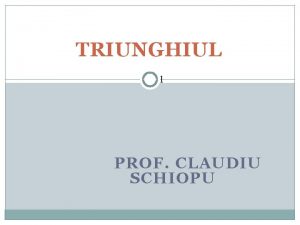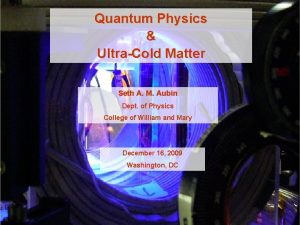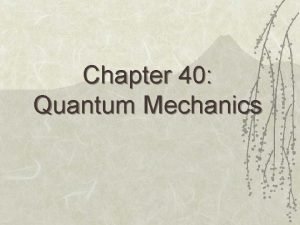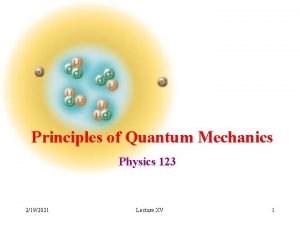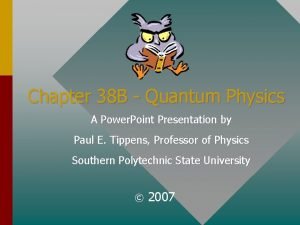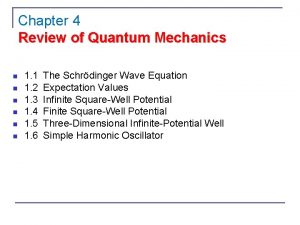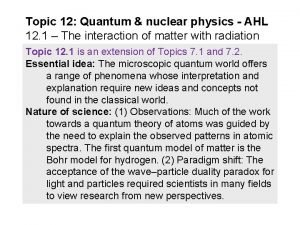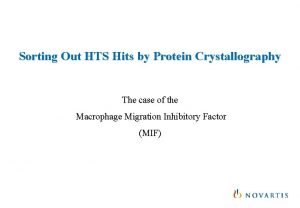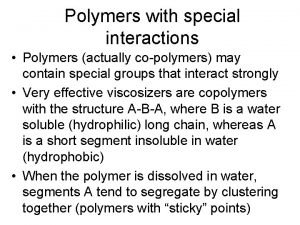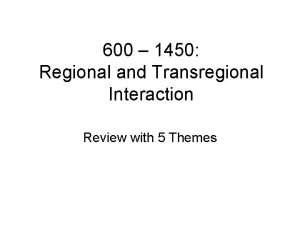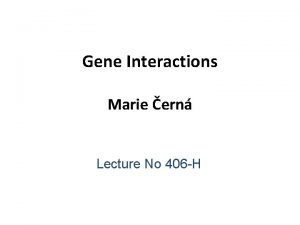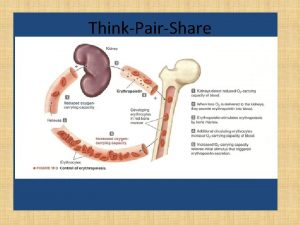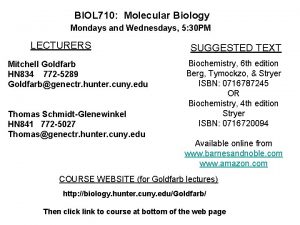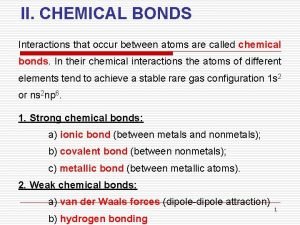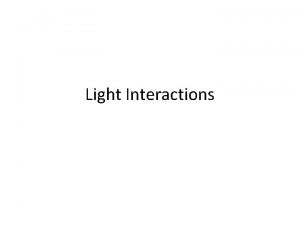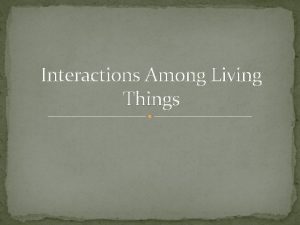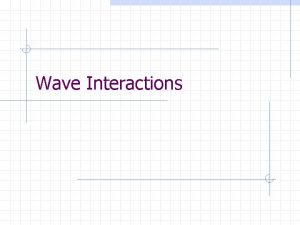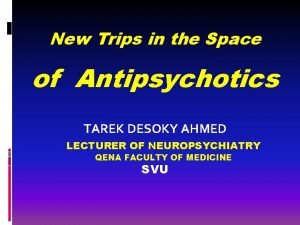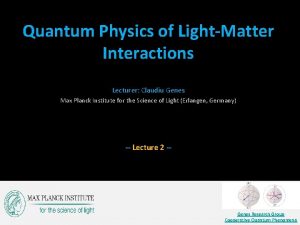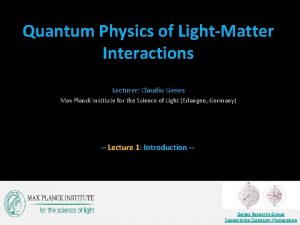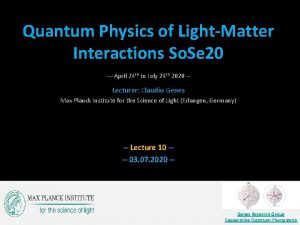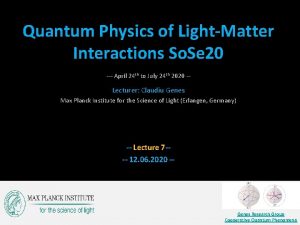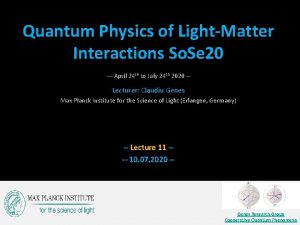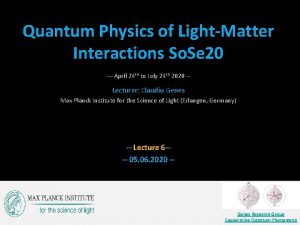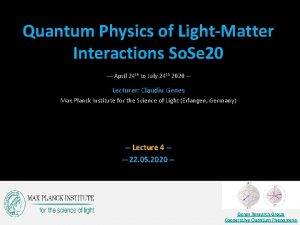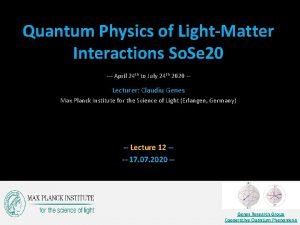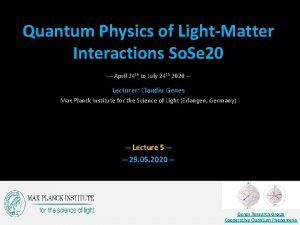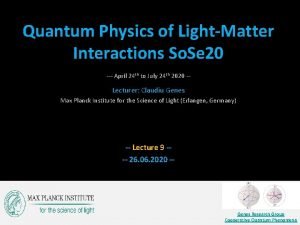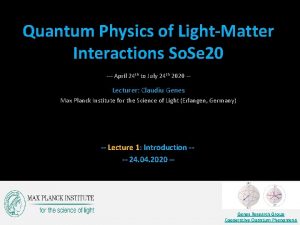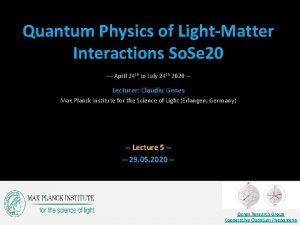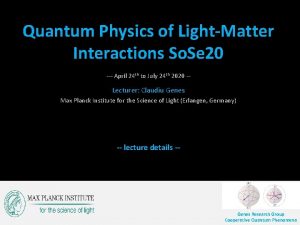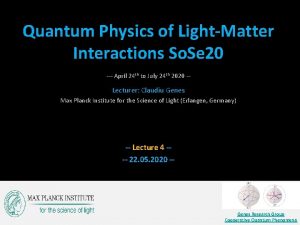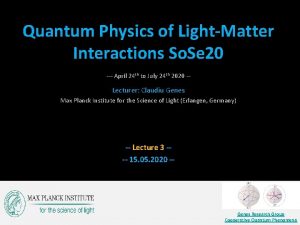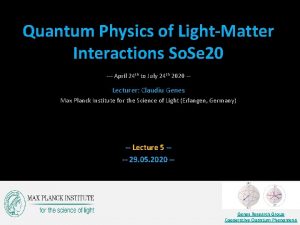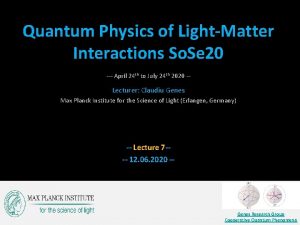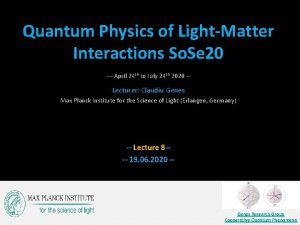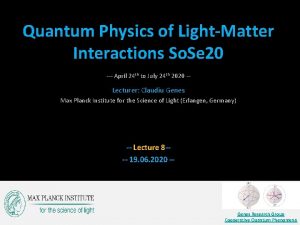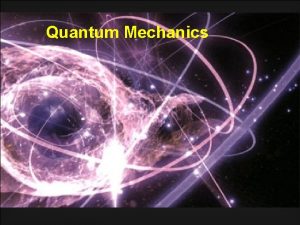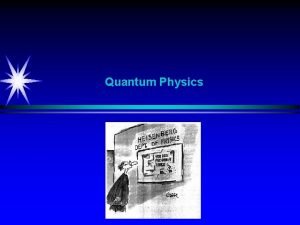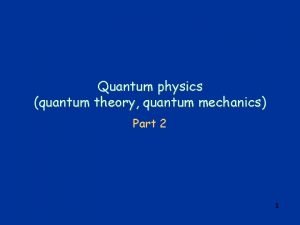Quantum Physics of LightMatter Interactions Lecturer Claudiu Genes
























































- Slides: 56

Quantum Physics of Light-Matter Interactions Lecturer: Claudiu Genes Max Planck Institute for the Science of Light (Erlangen, Germany) -- Lecture 6 -- Genes Research Group Cooperative Quantum Phenomena

From the last class q For a double-sided undriven cavity we have the following Langevin equation Laser drive

From the last class q For a double-sided undriven cavity we have the following Langevin equation q Laser driving is easily included Laser drive

From the last class q For a double-sided undriven cavity we have the following Langevin equation q Laser driving is easily included q This comes from assuming that an individual mode on the left is continuously driven into a coherent state Laser drive

From the last class q For a double-sided undriven cavity we have the following Langevin equation q Laser driving is easily included q This comes from assuming that an individual mode on the left is continuously driven into a coherent state q And we make a replacement (where the displaced noise operator is zero-averaged) Laser drive

From the last class q For a double-sided undriven cavity we have the following Langevin equation q Laser driving is easily included q The important properties of the input noise terms (zero average and white noise correlations) Laser drive

Single-sided cavity (simplified approach) q Let us consider that the right mirror is perfectly reflective (single sided cavity). We can easily write q …where we made the substitution and included all noise in the

Single-sided cavity (simplified approach) q Let us consider that the right mirror is perfectly reflective (single sided cavity). We can easily write q …where we made the substitution and included all noise in the q But we can also obtain this by folding a two-sided cavity into a single-sided one q The compound noise has the same properties total decay rate as and we need to redefine the

Solving a quantum Langevin equations – time domain q We start with the driven equation

Solving a quantum Langevin equations – time domain q We start with the driven equation q And first move into a rotating frame to eliminate the fast laser time evolution q We can formally integrate to get

Solving a quantum Langevin equations – time domain q We start with the driven equation q And first move into a rotating frame to eliminate the fast laser time evolution q We can formally integrate to get

Solving a quantum Langevin equations – time domain q We start with the driven equation q And first move into a rotating frame to eliminate the fast laser time evolution q We can formally integrate to get Transient solution to get

Solving a quantum Langevin equations – time domain q We start with the driven equation q And first move into a rotating frame to eliminate the fast laser time evolution q We can formally integrate to get Transient solution Steady state solution to get

Solving a quantum Langevin equations – time domain

Solving a quantum Langevin equations – time domain q We use (by pushing the initial condition back in time )

Solving a quantum Langevin equations – time domain q We use (by pushing the initial condition back in time ) q Which gives the steady state for the cavity mode amplitude q As expected we obtain a Lorentzian around the cavity resonance and with linewidth

Solving a quantum Langevin equations – time domain q We use (by pushing the initial condition back in time ) q Which gives the steady state for the cavity mode amplitude q As expected we obtain a Lorentzian around the cavity resonance and with linewidth q Notice that an usual failure in these calculation is to set derivatives to zero in steady state. This is not allowed as noise terms are quickly oscillating. Instead it is the noise that keeps comutators

Input-output relations q Tracing back to the derivation of the Langevin equation (for single sided cavity) q where the input noise is defined with respect to initial time operators (and notice that we keep classical drive amplitude within the input noise terms

Input-output relations q Tracing back to the derivation of the Langevin equation (for single sided cavity) q where the input noise is defined with respect to initial time operators (and notice that we keep classical drive amplitude within the input noise terms q Now we integrate with respect to a time in the future q And define similarly an output operator

Input-output relations q Tracing back to the derivation of the Langevin equation (for single sided cavity) q where the input noise is defined with respect to initial time operators (and notice that we keep classical drive amplitude within the input noise terms q Now we integrate with respect to a time in the future q And define similarly an output operator q From the two different forms of the Langevin equations we obtain a simple relation

Cavity tranmission for double-sided setup q Let us consider an incoming field of amplitude q We can connect the incoming, reflected and transmitted parts via the input-output relations at each mirror (assuming both mirrors have loss ) Notice the connection as used in the transfer matrix formalism

Cavity tranmission for double-sided setup q Let us consider an incoming field of amplitude q We can connect the incoming, reflected and transmitted parts via the input-output relations at each mirror (assuming both mirrors have loss ) Notice the connection as used in the transfer matrix formalism q Using the result from a few slides back q …we have

TLS inside an optical resonator

The Rabi Hamiltonian q As previously written for the fictitious quantization box, before any rotating wave approximations and for a single cavity mode we can write

The Rabi Hamiltonian q As previously written for the fictitious quantization box, before any rotating wave approximations and for a single cavity mode we can write q The coupling strength now depends also on the positioning along the standing wave describing the spatial part of the cavity mode

The Rabi Hamiltonian q As previously written for the fictitious quantization box, before any rotating wave approximations and for a single cavity mode we can write q The coupling strength now depends also on the positioning along the standing wave describing the spatial part of the cavity mode q The model is solvable (however solution is tedious) – see D. Braak, Integrability of the Rabi Model, Phys. Rev. Lett. 107, 100401 (2011)

The Rabi Hamiltonian q As previously written for the fictitious quantization box, before any rotating wave approximations and for a single cavity mode we can write q The coupling strength now depends also on the positioning along the standing wave describing the spatial part of the cavity mode q The model is solvable (however solution is tedious) – see D. Braak, Integrability of the Rabi Model, Phys. Rev. Lett. 107, 100401 (2011) q Easy solution for ground state eigenstates in the degenerate case where

The Jaynes-Cummings Hamiltonian q In a vast majority of situations we have approximation which allows for a rotating wave

The Jaynes-Cummings Hamiltonian q In a vast majority of situations we have approximation which allows for a rotating wave q This is an excitation conserving Hamiltonian. We use the infinite basis the matrix elements and compute

The Jaynes-Cummings Hamiltonian q In a vast majority of situations we have approximation which allows for a rotating wave q This is an excitation conserving Hamiltonian. We use the infinite basis the matrix elements and compute

The Jaynes-Cummings Hamiltonian q In a vast majority of situations we have approximation which allows for a rotating wave q This is an excitation conserving Hamiltonian. We use the infinite basis the matrix elements and compute Block diagonal

The Jaynes-Cummings Hamiltonian Single excitation manifold

The Jaynes-Cummings Hamiltonian Single excitation manifold Eigenvalues

The Jaynes-Cummings Hamiltonian Single excitation manifold Eigenvalues Resonant case !! Polaritons – hybrid light-matter quantum states

The Jaynes-Cummings Hamiltonian Single excitation manifold Resonant case q For a higher dimensional block

The Jaynes-Cummings Hamiltonian Single excitation manifold Resonant case q For a higher dimensional block Two excitations Single excitation

Photon blockade Single excitation manifold Photon blockade Two excitations Single excitation

Photon blockade Single excitation manifold Photon blockade q Trying to fit two excitations inside the cavity q Two photons cannot fulfill the resonance condition q Effect: photon expulsion i. e. a photon blockade regime where only one photon can enter the cavity at a time Two excitations Single excitation

The polariton transformation Upper and lower polaritons q Define polariton operators Single excitation

The polariton transformation Upper and lower polaritons q Define polariton operators q It is easy to see that they bring us from the ground state to the polaritonic states: for example Single excitation

The polariton transformation Upper and lower polaritons q Define polariton operators q It is easy to see that they bring us from the ground state to the polaritonic states: for example q Diagonalization of the Hamiltonian: working out the math we have Single excitation

The polariton transformation Upper and lower polaritons q Define polariton operators q It is easy to see that they bring us from the ground state to the polaritonic states: for example q Diagonalization of the Hamiltonian: working out the math we have q This also diagonalizes the Lindblad terms: each polariton decay independently with its own collapse operator and equal rates Single excitation

Cavity-TLS optical linear response Low excitation limit – optical response of the cavity q We look at the complete problem with Hamiltonian q and two Lindblad terms

Cavity-TLS optical linear response Low excitation limit – optical response of the cavity q We look at the complete problem with Hamiltonian q and two Lindblad terms q We would like to derive a set of equations of motion for amplitudes

Cavity-TLS optical linear response Low excitation limit – optical response of the cavity q We look at the complete problem with Hamiltonian q and two Lindblad terms q We would like to derive a set of equations of motion for amplitudes q These equations are not closed as the population difference operator comes in

Cavity-TLS optical linear response Low excitation limit – optical response of the cavity q We look at the complete problem with Hamiltonian q and two Lindblad terms q We would like to derive a set of equations of motion for amplitudes q These equations are not closed as the population difference operator comes in q Approximation: the low excitation regime

Cavity-TLS optical linear response Low excitation limit – optical response of the cavity q Simplified linear set of first order differential equations

Cavity-TLS optical linear response Low excitation limit – optical response of the cavity q Simplified linear set of first order differential equations q Analysis of eigenvalues (real and imaginary parts) leads to

Cavity-TLS optical linear response Low excitation limit – optical response of the cavity q Simplified linear set of first order differential equations q Analysis of eigenvalues (real and imaginary parts) leads to q The onset of the strong coupling regime (splitting of eigenfrequencies)

Cavity-TLS optical linear response – strong coupling Low excitation limit – optical response of the cavity q Simplified linear set of first order differential equations q Analysis of eigenvalues (real and imaginary parts) leads to q The onset of the strong coupling regime (splitting of eigenfrequencies)

Cavity-TLS optical linear response Low excitation limit – optical response of the cavity q Simplified linear set of first order differential equations q Analysis of eigenvalues (real and imaginary parts) leads to q The onset of the strong coupling regime (splitting of eigenfrequencies) q Steady state values

Cavity-TLS optical linear response Low excitation limit – optical response of the cavity q We can get the cavity transmission now q Polaritonic peaks appear in the cavity transmission/reflection/absorption spectrum

Cavity-TLS optical linear response – the Purcell regime Low excitation limit – modification of the natural decay rate q Let us assume a regime characterized by q This is highlighted (in gray) in the plots of the eigensystem

Cavity-TLS optical linear response – the Purcell regime Low excitation limit – modification of the natural decay rate q Let us assume a regime characterized by q This is highlighted (in gray) in the plots of the eigensystem q Assume steady state for the cavity field* and obtain to lead to which could be plugged back in *perform a simple numerical simulation of the time dynamics of such system under the conditions above to convince yourselves that the system indeed achieves steady state very quickly for the cavity mode

Cavity-TLS optical linear response – the Purcell regime Low excitation limit – modification of the natural decay rate q Let us assume a regime characterized by q This is highlighted (in gray) in the plots of the eigensystem q Assume steady state for the cavity field* and obtain to lead to which could be plugged back in Purcell effect *perform a simple numerical simulation of the time dynamics of such system under the conditions above to convince yourselves that the system indeed achieves steady state very quickly for the cavity mode

Cavity-TLS optical linear response – the Purcell regime Low excitation limit – modification of the natural decay rate q Let us assume a regime characterized by q This is highlighted (in gray) in the plots of the eigensystem q Assume steady state for the cavity field* and obtain to lead to which could be plugged back in Purcell effect q Increase by a factor where the cooperativity is defined as *perform a simple numerical simulation of the time dynamics of such system under the conditions above to convince yourselves that the system indeed achieves steady state very quickly for the cavity mode
 Lecturer's name
Lecturer's name Claudiu schiopu
Claudiu schiopu Quantum physics vs quantum mechanics
Quantum physics vs quantum mechanics Classical mechanics
Classical mechanics Linked genes and unlinked genes
Linked genes and unlinked genes Factors of 15
Factors of 15 Polygenic inheritance
Polygenic inheritance Photography lecturer
Photography lecturer Lecturer name
Lecturer name Gcwak
Gcwak Physician associate lecturer
Physician associate lecturer Lecturer in charge
Lecturer in charge Lecturer in charge
Lecturer in charge Pearson lecturer resources
Pearson lecturer resources Spe distinguished lecturer
Spe distinguished lecturer Cfa lecturer handbook
Cfa lecturer handbook Designation lecturer
Designation lecturer Spe distinguished lecturer
Spe distinguished lecturer Good afternoon class
Good afternoon class Lecturer asad ali
Lecturer asad ali Designation of lecturer
Designation of lecturer Lector vs lecturer
Lector vs lecturer Seth aubin
Seth aubin Quantum and nuclear physics
Quantum and nuclear physics Quantum physics wave function
Quantum physics wave function Quantum physics wave function
Quantum physics wave function Quantum physics summary
Quantum physics summary Review of quantum mechanics
Review of quantum mechanics Khan academy
Khan academy Quantum physics in hindi
Quantum physics in hindi Quantum nuclear physics
Quantum nuclear physics Beta positive decay
Beta positive decay Why does it happen
Why does it happen University physics with modern physics fifteenth edition
University physics with modern physics fifteenth edition Physics ia topics
Physics ia topics Hccee
Hccee Special interactions
Special interactions Regional and transregional interactions
Regional and transregional interactions Product architecture example
Product architecture example Examples of epistasis in humans
Examples of epistasis in humans How do earth's spheres interact
How do earth's spheres interact Organization of the lymphatic system
Organization of the lymphatic system Grapefruit-drug interactions chart
Grapefruit-drug interactions chart Interactions
Interactions Intramolecular interactions
Intramolecular interactions Congress formal and informal powers
Congress formal and informal powers Interactions between ais and internal and external parties
Interactions between ais and internal and external parties Chapter 22 reaching out cross-cultural interactions
Chapter 22 reaching out cross-cultural interactions Interactions between atoms occur
Interactions between atoms occur Symbiosis and species interactions keystone webquest
Symbiosis and species interactions keystone webquest Do all em waves travel at the speed of light
Do all em waves travel at the speed of light Interactions among living things
Interactions among living things Moa of h2 antagonist
Moa of h2 antagonist Wave
Wave Sertraline interactions
Sertraline interactions Nutrient interactions
Nutrient interactions Metformin overdose
Metformin overdose

